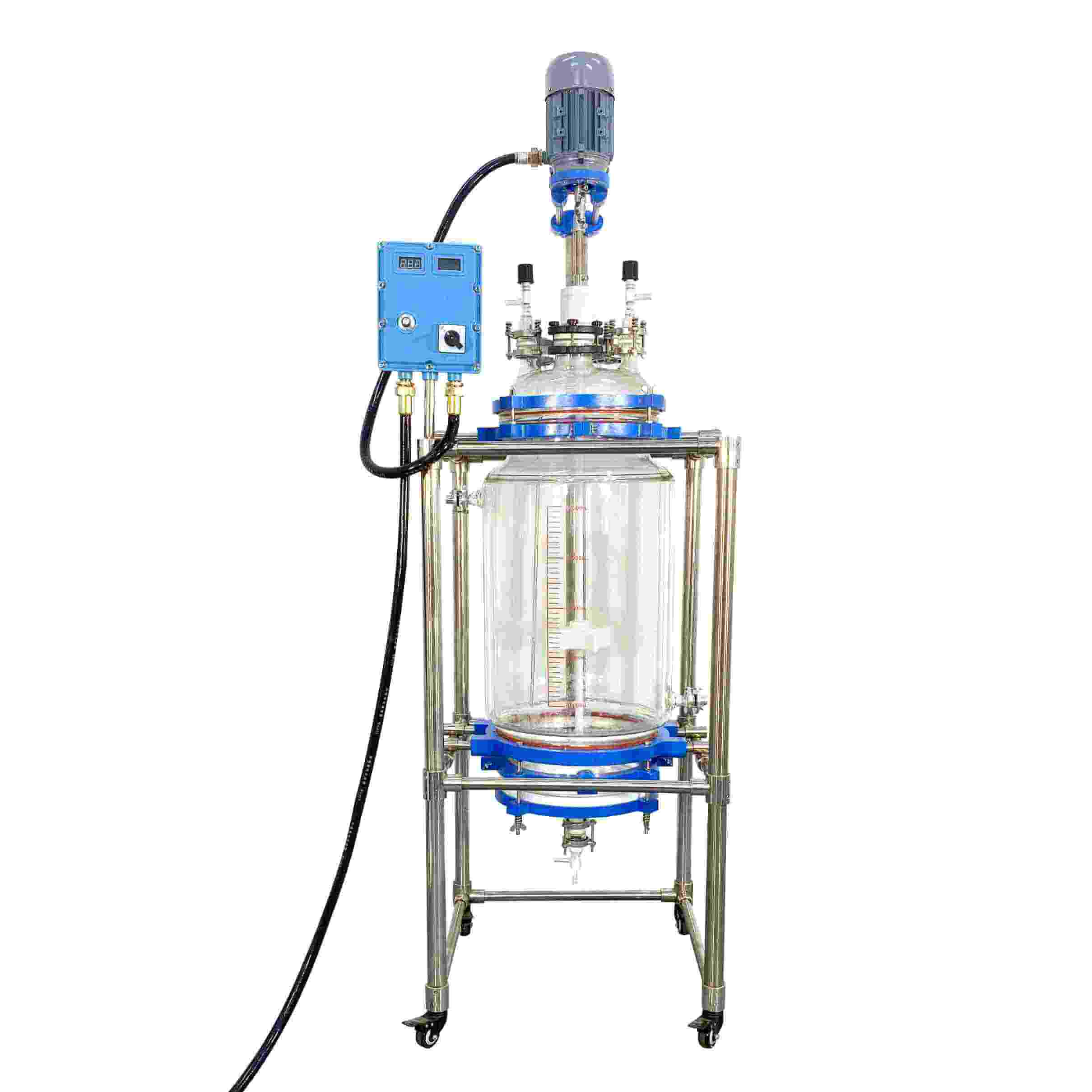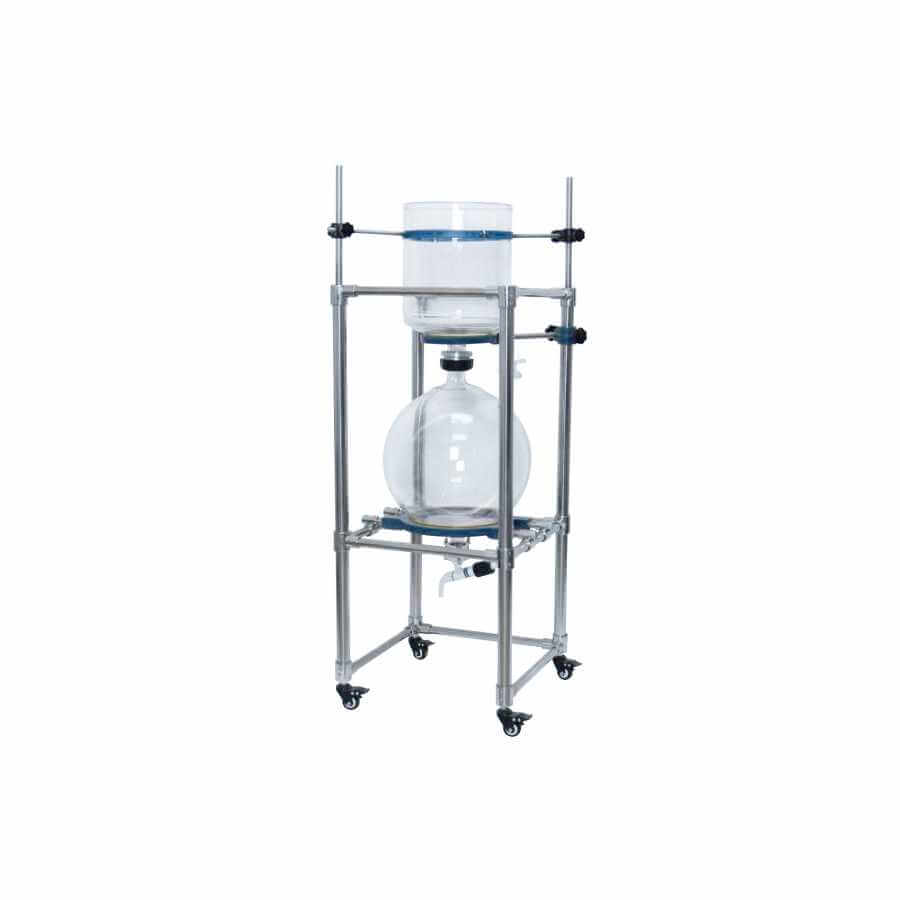

Glass Reactor
Glass reactors: used in chemical reactions, drug research and development, fine chemicals, food manufacturing, and other fields.
Material
glass
Capacity (L)
10-10000+
Mixing system
anchor, paddle, frame and others
Heating system
electric heating, oil heating and others
RUNGYU glass reactors are commonly used biochemical instruments and are widely used in modern fine chemicals, biopharmaceuticals, scientific research and experiments, and other industries. They can be used for concentration, distillation, reflux, separation, and purification reactions under the conditions of constant speed, constant force, and constant temperature. It is an ideal equipment for teaching, experiment, pilot test, and production.
Request a quoteGlass reactors are widely used in petroleum, chemical, pesticide, pharmaceutical, food, and other industries. Among them, the double-layer glass reactor has the highest usage amount.

Conditions for Improving the Efficiency of Double-layer Glass Reactors
1. Insulation medium
Due to the small thickness of the interlayer in the middle of the double-layer glass reactor, the thermal insulation performance is poor. In the process of using high temperature and low temperature, it is necessary to use thermal insulation materials for thermal insulation protection of the kettle body. The kettle body and liquid conduit of the double-layer glass reactor need to be wrapped with insulation material, and attention should be paid to the thickness of the insulation layer to ensure a good insulation effect.
2. Selection of temperature control medium
According to the required reaction temperature, temperature control media with different properties are selected as the heat transmission medium of the reaction. At low temperature, choose ice ethanol bath; at normal temperature, choose water bath; at high temperature, choose oil bath.
When using low or high temperatures, pay attention to choosing the appropriate medium. The key is viscosity. If the viscosity of the medium is too high, the circulation pump of the double-layer glass reactor may not be able to carry it. If the medium circulation effect is not good, the required temperature control effect will not be achieved. If a high-power circulation pump is replaced rashly, the pressure entering the medium is too high, which can easily damage the lining of the double-layer glass reactor, causing the double-layer glass reactor to rupture. Usually, manufacturers will also choose the corresponding heating medium according to their own products.
3. Storage location
As a reaction amplification test device, the double-layer glass reactor is usually 50-150L in volume, and the volume can be customized in specific cases. Therefore, the scale of the test should not be underestimated. Since the kettle body is made of glass, stainless steel is the bracket and the legs are casters, the storage location needs to be carefully selected.
Although the casters can be fixed with foot buckles, they are not very stable. Therefore, when storing, pay attention to choosing a flat place to store it flatly, and keep the mechanical stirring center consistent with the double-layer glass reactor, otherwise, it will easily shake and become unstable, causing safety accidents. The height of the double-layer glass reactor is about 1.5m, and together with the straight-up condensation tube, its overall height is about 2m. The general floor fume hood cannot be installed, but it must be placed in a well-ventilated place.
4. Notes on feeding
The double-layer glass reactor is an independent reaction rack, unlike the chemical reactor which has a reaction table, and the reserved feeding port is small, making the feeding process more difficult.
The one-time feeding amount of the double-layer glass reactor should not be too large. According to the temperature, reflux, and pressure of the reaction, evaluate and add the appropriate amount of material. Generally, it should not exceed 2/3 of the kettle body.
Suggestion: For solid reagents, it is recommended to prepare a solution and add it to the kettle; liquid reagents, can be pumped into the kettle through the matching water pump or oil pump. In particular, when the reaction material is added to the reaction kettle through a constant pressure dropping funnel or a common dropping funnel, a corresponding mobile ladder needs to be matched so that the staff can add the test material.
In addition to the above precautions, users also need to regularly maintain the double-layer glass reactor in the usual use process to ensure the life of the equipment and reduce the cost of the enterprise.




